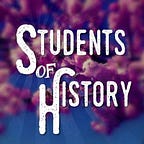Cold War Primary Source Activities
Teaching with primary sources is a fantastic strategy to get students to interpret history and connect better with the people you are studying. Each of the units I create includes various primary and secondary resource activities for students study. Here are a few I use for studying the Cold War:
In the first letter, McCarthy makes a claim of possessing names of communists working in the US State Department. President Truman’s amazing response calls out McCarthy for his tactics and calls him sorry and unfit for public office.
This excerpt from President Harry Truman’s famous address to Congress that established the Truman Doctrine. The primary source reading is excerpted down to one page so students can easily understand the key points without getting bogged down in pages and pages of text. Following the speech is a worksheet page of analysis questions students can answer based on the reading. An answer key for these questions is included as well for your convenience!
Another great resource is this primary source pack that includes 2 resources related to Russian leader Nikita Khrushchev, both from 1961: a famous speech and a secret telegram about his impressions of John F. Kennedy.
Khrushchev’s speech was given at the annual Congress of the Communist Party of the Soviet Union. This is an abbreviated excerpt from it that details his views on the competition between capitalism and communism, America as an imperialist, and the plan for disarmament.
The second primary source is a top secret US telegram sent after Khrushchev met with President Kennedy in June 1961. The telegram explains Khrushchev’s initial impression of Kennedy and how it changed over the course of their discussions.
Worksheets for both resources with open-ended questions designed to guide your students’ understanding of the Cold War. Answer keys for both worksheets are also included for your convenience.
For the Vietnam War, I have this amazing, poetic letter from an American soldier who died in the Vietnam War provides a moving interpretation of what it means to be a patriotic American.
The letter is beautifully written and will surely have a powerful affect on your students. It is also a great way to integrate Common Core-aligned strategies into a lesson on the Vietnam War.
All of theses resources can also be downloaded as part of my Cold War Complete Unit Bundle.
You can also subscribe to Students of History and get immediate access to all of these resources plus over 500 more!
Subscriptions can be cancelled at any time and you’re under no obligation to remain for a set length of time. They’re a great way to get access to the best resources for teaching history at a low monthly price!
Thanks so much for stopping by!
